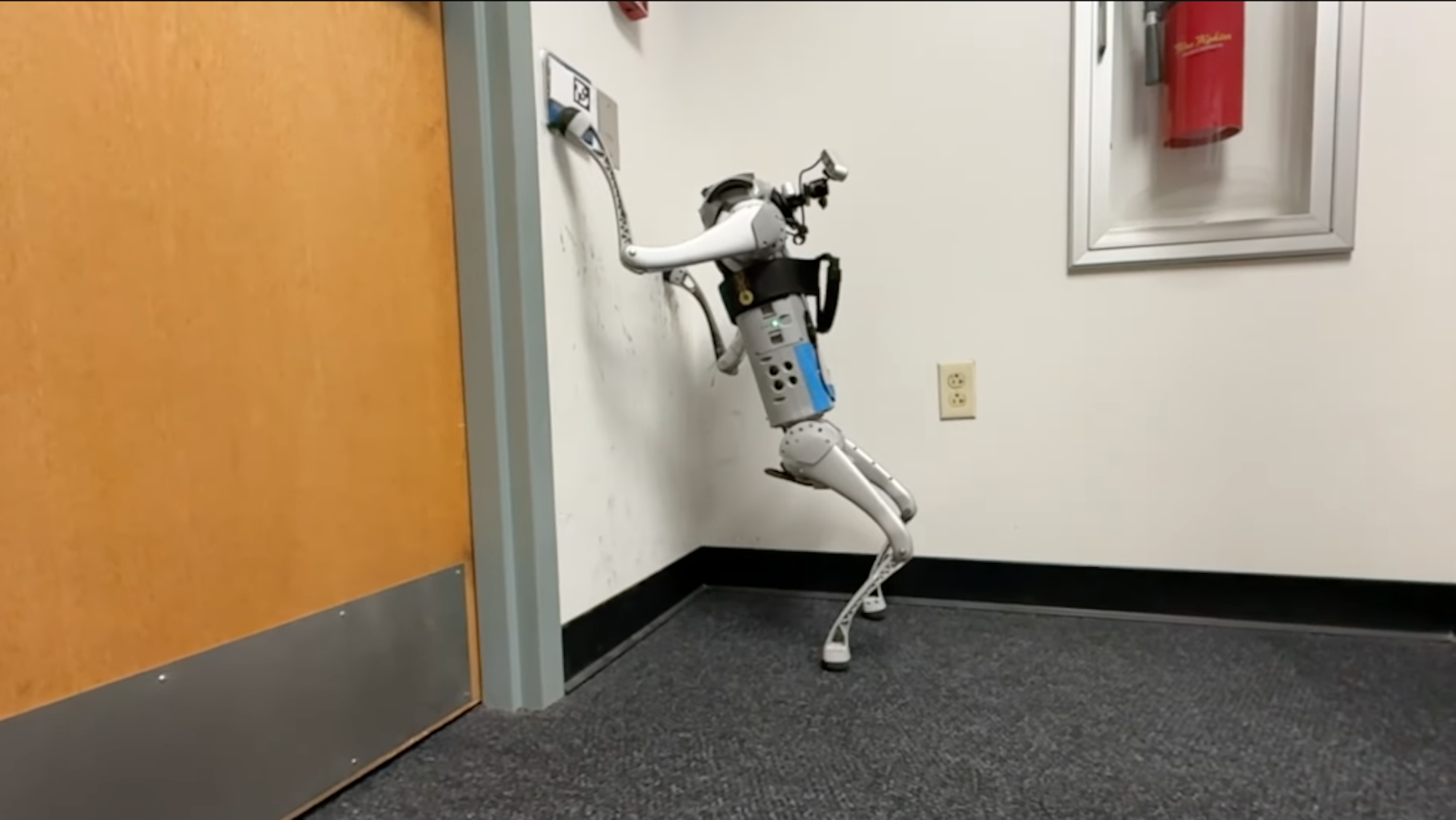

Even with their many advances, quadrupedal robots’ legs are most often still just made for walking. Using individual front paws for moving and non-locomotion tasks like pushing buttons or moving objects, however, usually falls outside the machines’ reach, but a team of researchers appear to be designing them to finally bridge that gap.
Roboticists from Carnegie Mellon University and UC Berkeley have demonstrated the ability to program a quadrupedal robot—in this case, a Unitree Go1 one utilizing an Intel RealSense camera—to use its front limbs not only to walk, but also to help climb walls and interact with simple objects, as needed. The progress, detailed in a paper to be presented next month at the International Conference of Robotics and Automation (ICRA 2023), potentially marks a major step forward for what quadrupedal robots can handle. There’s also some pretty impressive video demonstrations, as well. Check out the handy machine in action below:

To pull off these abilities, researchers broke down their robots’ desired tasks into two broad skill sets—locomotion (movement like walking or climbing walls) and manipulation (using one leg to interact with externalities while balancing on the other three limbs). As IEEE Spectrum explains, the separation is important: Often, these tasks can prove to be in opposition to one another, leading robots to get stuck in computational quandaries. After training how to handle both skill sets within simulations, the team combined it all into a “robust long-term plan” via learning a behavior tree from “one clean expert demonstration,” according to the research paper.
[Related: A new tail accessory propels this robot dog across streams]
Developing cost-effective robots capable of tackling both movement and interaction with their surroundings is a key hurdle in deploying machines that can easily maneuver through everyday environments. In the research team’s videos, for example, the quadrupedal robot is able to walk up to a door, then press the nearby wheelchair access button to open it. Obviously, it’s much easier to rely on a single robot to manage both requirements, as opposed to using two robots, or altering human-specific environments to suit machines.
Combine these advancements with existing quadrupedal robots’ abilities to traverse diverse terrains such as sand and grass, toss in the trick of scaling walls and ceilings, and you’ve got a pretty handy four-legged friend.
